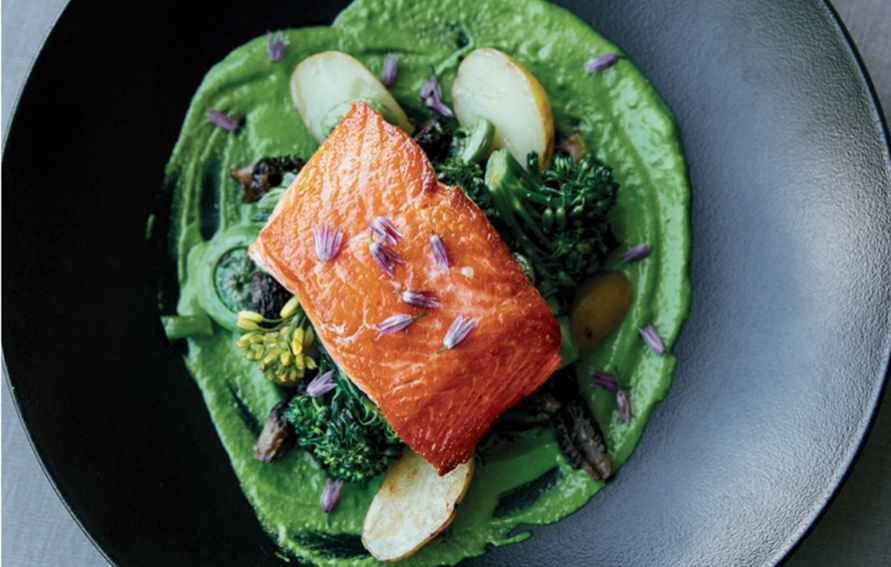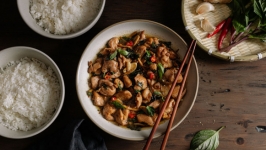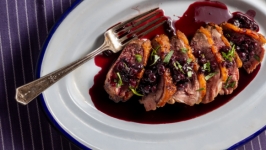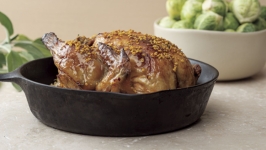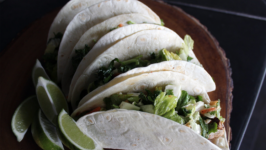Preparation
Wild salmon is the lifeblood of many of our coastal families. The fight to protect wild salmon is a constant and ongoing campaign. I will always choose wild over farmed: wild is simply healthier for both our bodies and the environment. It’s lower in saturated fats than farmed salmon, for one. What many consumers don’t know is that packages labelled Atlantic salmon mean that the salmon was farmed. We are also starting to see farmed coho and Chinook, so do read the labels. This is a wonderfully basic and tremendously tasty dish. Parsley is full of nutritional value and is completely underused in most kitchens (but not in SoBo’s).
Parsley sauce
2 bunches fresh parsley
1 shallot, quartered
1 head roasted garlic
1/2 cup white wine vinegar
¼ cup olive oil
1 teaspoon salt
Potatoes and broccolini
1 lb (454 g) new potatoes
1 bunch broccolini, cut in bite-sized pieces
Seared wild salmon
2 tablespoons olive oil
Four 8 ounce (½ lb.) fillets wild Chinook salmon
2 teaspoons salt
1 lemon, halved
2 tablespoons butter
Chive flower blossoms, for garnish (optional)
Prepare the parsley sauce: In a blender, blend all the ingredients until very smooth. Set aside until ready to serve.
Prepare the potatoes and broccolini: In a medium saucepan, bring 4 cups salted water to a boil. Add the potatoes, cover and turn the heat to medium low. Simmer for about 15 minutes, until cooked through. Drain and let cool to room temperature. Slice into medallions. In a separate medium saucepan, bring 4 cups salted water to a boil. Drop the broccolini into the water and cook for 2 minutes. Broccolini is quite nice nearly raw, so it doesn’t need much cooking time. Remove from the water and set aside.
Cook the salmon: Preheat the oven to 400 F.
Heat the oil in a large ovenproof frying pan over medium-high heat. Season the salmon with the salt. Place the salmon in the pan, one piece at a time so that the pan stays hot enough for a good sear. Do not overcrowd the pan. After 2 to 3 minutes, the salmon will start to release from the pan (see note). If it’s still sticking, give it another minute or so.
Carefully flip the salmon pieces over. Squeeze the lemon on top, add the butter to the pan and transfer to the oven. Bake the salmon for 3 to 5 minutes, depending on the thickness of the fish and desired doneness (see note).
To serve: While the fish is baking, reheat the vegetables in the oven alongside. (Don’t reheat the parsley sauce: it’s meant to be served room temperature and will turn brown if heated.) Divide everything among four plates, garnish with the chive flowers, if desired, and enjoy.
Notes: A good sign that fish or seafood is ready to turn is that it has released from the pan. If you struggle to flip it over, the fish tears apart. I usually tell my cooks that the fish will tell you when it’s time.
Some salmon testing tips: I insert a metal skewer or thin knife into the cooked salmon for a couple of seconds, then withdraw it and feel the blade. If it’s cold, the salmon needs to cook a few more minutes; if it’s hot, the salmon is ready. I also lightly press down on the sides — like temperature-testing steaks. Rare is super soft, and the flesh firms more as it cooks. Careful: if it’s totally firm, you’ve likely overcooked it.
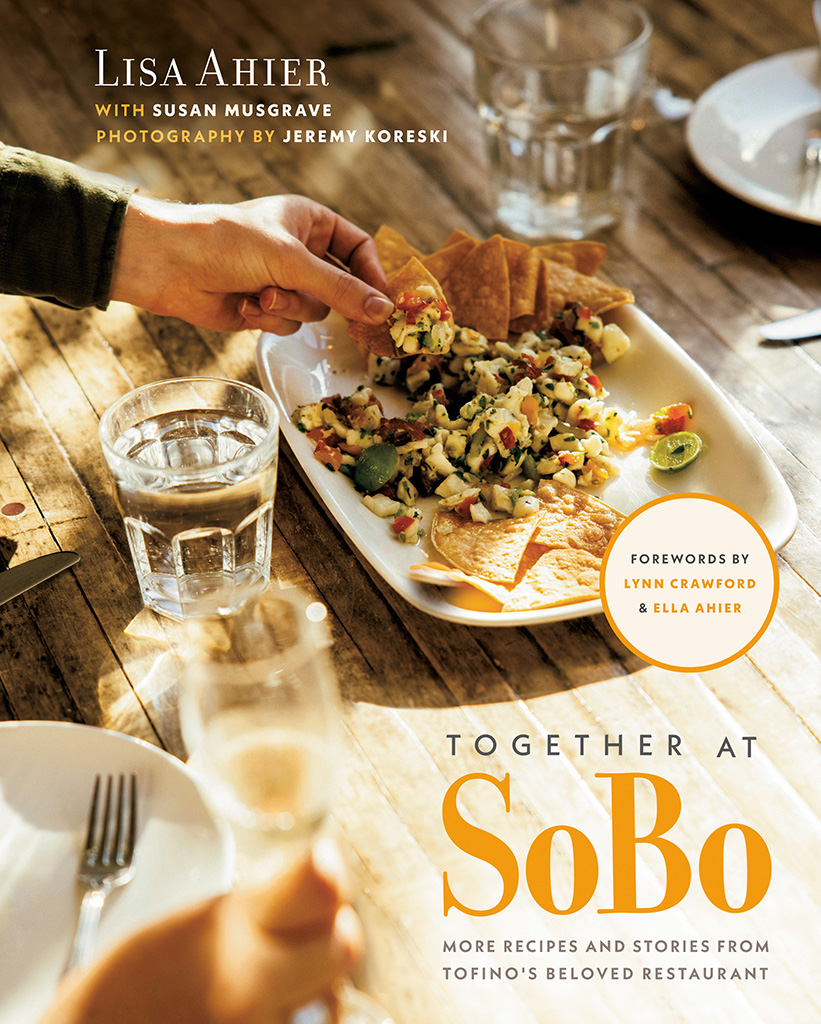
Together at SoBo, by Lisa Ahier, with Susan Musgrave. Copyright © 2023 Lisa Elaine Ahier. Photographs by Jeremy
Koreski. Published by Penguin and Appetite by Random House®, divisions of Penguin Random
House Canada Limited. Reproduced by arrangement with the Publisher. All rights reserved.

